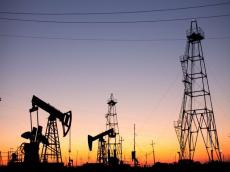|
|
TODAY.AZ / Business
OPEC, IEA set their ways apart on oil demand following global economic crunch
12 March 2024 [12:36] - TODAY.AZ

Producer group OPEC and the International Energy Agency, the world's most closely watched forecasters of oil demand growth, are further apart than they have been for at least 16 years in their views on fuel use, Azernews reports, citing the report by Reuters.
The gap between the IEA, which represents industrialised countries, and the Organisation of the Petroleum Exporting Countries means the two are sending divergent signals to traders and investors on oil market strength in 2024 and, for the longer term, about the speed of the world's transition to cleaner fuels.
In February this year, the IEA predicted demand would rise by 1.22 million barrels per day (bpd) in 2024, while in its February report, OPEC expected 2.25 million bpd. The difference is about 1% of world demand.
"The IEA has a very strong perception that the energy transition will move ahead at a much faster pace," Neil Atkinson, a former head of the IEA's Oil Markets Division, said.
"Both agencies have boxed themselves in with a position, which is why they have this enormous gulf in demand forecasts."
To put the difference in context, Reuters analysed the changes each agency has made to its oil demand forecasts from 2008 to 2023 and the first two months of this year.
The period was chosen to give a long enough time series to draw conclusions and because it included extreme volatility in oil demand, starting with the 2008 financial crisis and ending with the 2020 pandemic and subsequent demand recovery.
International oil futures hit an all-time high of almost $150 a barrel in July 2008, compared with roughly $80 now.
The analysis of 16 years of IEA and OPEC monthly reports found the 1.03 million bpd gap in February was the biggest in per-barrel terms in that period.
The IEA, asked about the gap between the two agencies' 2024 forecasts and whether it saw its forecasts as more accurate than OPEC's, said this year's demand slowdown amounted to a return to the growth trends seen before the pandemic, and the slowdown is already visible in oil deliveries data.
"We expect this to continue this year, with mobility indicators suggesting that road and air traffic are stabilising," the IEA said, adding it could not comment on other organisations' forecasts.
OPEC also asked to comment on the gap and whether it saw its forecasts as more accurate. It said its 2023 demand growth forecast of 2.5 million bpd was only slightly below its initial number given in July 2022.
"We have been very steady with our 2023 oil demand forecast. Many other forecasters started low and then continually revised up their 2023 forecast," OPEC's Vienna secretariat said, without commenting on 2024.
URL: http://www.today.az/news/business/245886.html
 Print version
Print version
Connect with us. Get latest news and updates.
See Also
- 31 October 2025 [12:35]
EU names Azerbaijan strategic partner in Middle Corridor initiative - 30 October 2025 [12:58]
Azerbaijan, Türkiye sign MoU to strengthen cooperation in insurance sector - 30 October 2025 [12:02]
Azerbaijan and OECD discuss prospects for enhanced cooperation - 29 October 2025 [15:29]
Locations for new energy storage systems revealed in Azerbaijan - 29 October 2025 [15:04]
Azerbaijan strengthens green financing framework for renewable energy projects, says official - 29 October 2025 [14:52]
EBRD supports Azerbaijan in developing national hydrogen energy roadmap - 29 October 2025 [11:43]
Azerbaijan, Xi’an discuss prospects for direct flights and cooperation in transport - 29 October 2025 [10:00]
Azeri Light price declines - 28 October 2025 [17:36]
World Bank urges Azerbaijan to accelerate reforms to attract private investment - 28 October 2025 [10:21]
Azerbaijan strengthens position among Turkiye’s top three natural gas suppliers in 2025
Most Popular
 Road exchange and its subtleties for Baku and Yerevan
Road exchange and its subtleties for Baku and Yerevan
 Crime without statute of limitations: five years since tragedy of Barda
Crime without statute of limitations: five years since tragedy of Barda
 Pakistan closes airspace along border amid India’s large-scale military drills
Pakistan closes airspace along border amid India’s large-scale military drills
 Azerbaijani Foreign Minister meets Omani counterpart to boost bilateral cooperation
Azerbaijani Foreign Minister meets Omani counterpart to boost bilateral cooperation
 World Bank urges Azerbaijan to accelerate reforms to attract private investment
World Bank urges Azerbaijan to accelerate reforms to attract private investment
 Azerbaijan, Oman discuss deepening partnership during official talks
Azerbaijan, Oman discuss deepening partnership during official talks
 BIG to host first international conference on Belgian colonialism
BIG to host first international conference on Belgian colonialism
